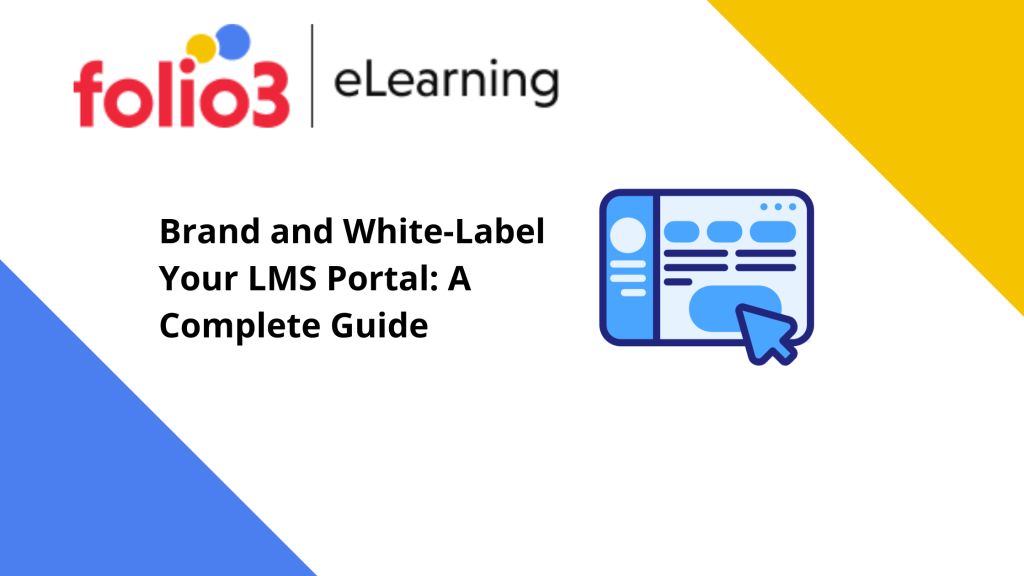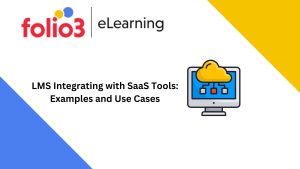
Executive Summary:
Organizations frequently use Learning Management System (LMS) portals to give an interactive learning experience. While several other LMS options are available, choosing to white-label your LMS portal is a noteworthy choice.
Introduction:
Organizations must build a strong brand identity and a specialized learning environment in the cutthroat world of online learning. A practical choice for achieving these objectives is a white-label LMS package. You may brand your LMS portal with your company’s logo, colors, and visual components by white-labeling it, seamlessly extending your corporate identity. This modification enables you to provide a uniform user experience that aligns with your company’s values and increases learner engagement. Organizations can brand and tailor their learning portals by implementing white-label LMS solutions to meet their unique needs.

Gains from White-Label LMS Solutions:
- Increased User Engagement:
Adding your brand’s aspects to your LMS portal will give learners a more engrossing and engaging learning experience. White-label LMS solutions provide improved knowledge retention and higher course completion rates, resulting from this engagement’s ability to draw in and hold the learners’ attention.
- Consistency in Branding:
By giving your LMS portal white-label LMS solutions, you can ensure that your brand is consistently represented, which makes it easier for users to recognize and connect the platform with your business. The overall learning process is improved since it fosters a sense of trust and familiarity.
- Increased business Visibility:
You can advertise and raise your business profile by white-labeling your LMS portal by implementing white-label LMS solutions. Your company’s logo and branding components will be prominently shown each time learners use the site, enhancing your brand’s visibility.
- Flexible Customization:
White-label LMS solutions offer a wide range of customization possibilities, enabling you to modify the portal’s appearance, structure, and features to suit your needs. The vision and values of your organization can be reflected in the distinctive learning environment you design.
- Value-added Offering:
White-labeling your LMS portal creates new revenue streams for your e-learning system. You can provide your LMS services to clients, partners, or customers outside your company, creating new revenue streams.
- Efficiency in Money and Time:
White-label LMS solutions spare you the time and money to create a custom LMS. You may rapidly and affordably build your branded portal by utilizing a pre-built LMS platform and customizing it to your needs.
- Scalability and Flexibility:
Scalability in white-label LMS solutions enables you to accommodate more students and courses without sacrificing performance. Adding or changing features as necessary can also change the LMS to match changing learning demands.
- Data Ownership and Privacy:
Owning your data and maintaining user privacy are your rights when using a white-label LMS. By ensuring that data privacy and security procedures adhere to your organization’s standards and legal obligations, you may promote confidence among stakeholders and learners.
- Brand Credibility and Authority:
A white-label LMS enables you to position your brand as a credible authority in the education or training sector. You may present a professional image, establish credibility, and differentiate yourself from rivals by offering branded learning experiences. This branding can aid in luring fresh talent and cultivating enduring connections with customers or partners.
These advantages emphasize the value of personalization and branding in a white-label LMS solution, emphasizing their influence on the user experience, brand authority, and general success in the e-learning environment.
Step-by-Step Guide to White-Label Your LMS Portal:
- Determine Your Needs:
Determine the branding standards for your company, the customization choices you want, and the particular features you want to include in your white-labeled LMS portal.
- Select the Proper LMS Platform:
Opt for an LMS platform that supports white-labeling and meets your organization’s features, scalability, and user-friendliness requirements.
- Custom appearance:
You can alter the logo, color scheme, fonts, and general layout of your LMS portal’s appearance. Make sure the design complements the look and feel of your company.
- Customized Content:
Make the LMS portal’s content reflect the tone and voice of your company. Match the language and style of your brand in the headings, labels, and instructional text.
- Customizing the URL and Domain:
If possible, make your LMS site’s URL represent your brand. For a more polished and branded experience, think about adopting a subdomain or a custom domain name.
- Integrate Extra Features:
Include extra features and functions that support your learning objectives and brand standards. These could include gamification components, social learning aids, or software linkages.
- Tests and user feedback:
To ensure flawless functionality, thoroughly test your white-labeled LMS portal on various hardware and browsers. Before the formal launch, collect user feedback and make the required adjustments.
- Launch and Promote:
Once testing and customization have been completed to your satisfaction, launch and promote your white-labeled LMS portal. To maximize user uptake and engagement, promote it among your target demographic.
- Regular Updates and Maintenance:
Plan routine updates and maintenance tasks to guarantee the efficient operation of your white-labeled LMS site. Keep up with the most recent LMS software updates and security patches to offer a safe and modern learning environment.
- Continuous Improvement:
Monitor how users use and provide feedback on your white-labeled LMS site. To improve user experience and handle any new demands or difficulties, collect data and make iterative improvements.
Conclusion:
There are many advantages to white-labeling your LMS portal, including greater branding, better user engagement, and higher brand visibility. You may successfully brand and customize your LMS portal to meet your company’s needs by following the step-by-step instructions offered in this article. Remember that a well-branded and customized learning experience can significantly impact the effectiveness of your e-learning endeavors. Create a distinctive and interesting learning environment for your learners by embracing white-label LMS solutions.










